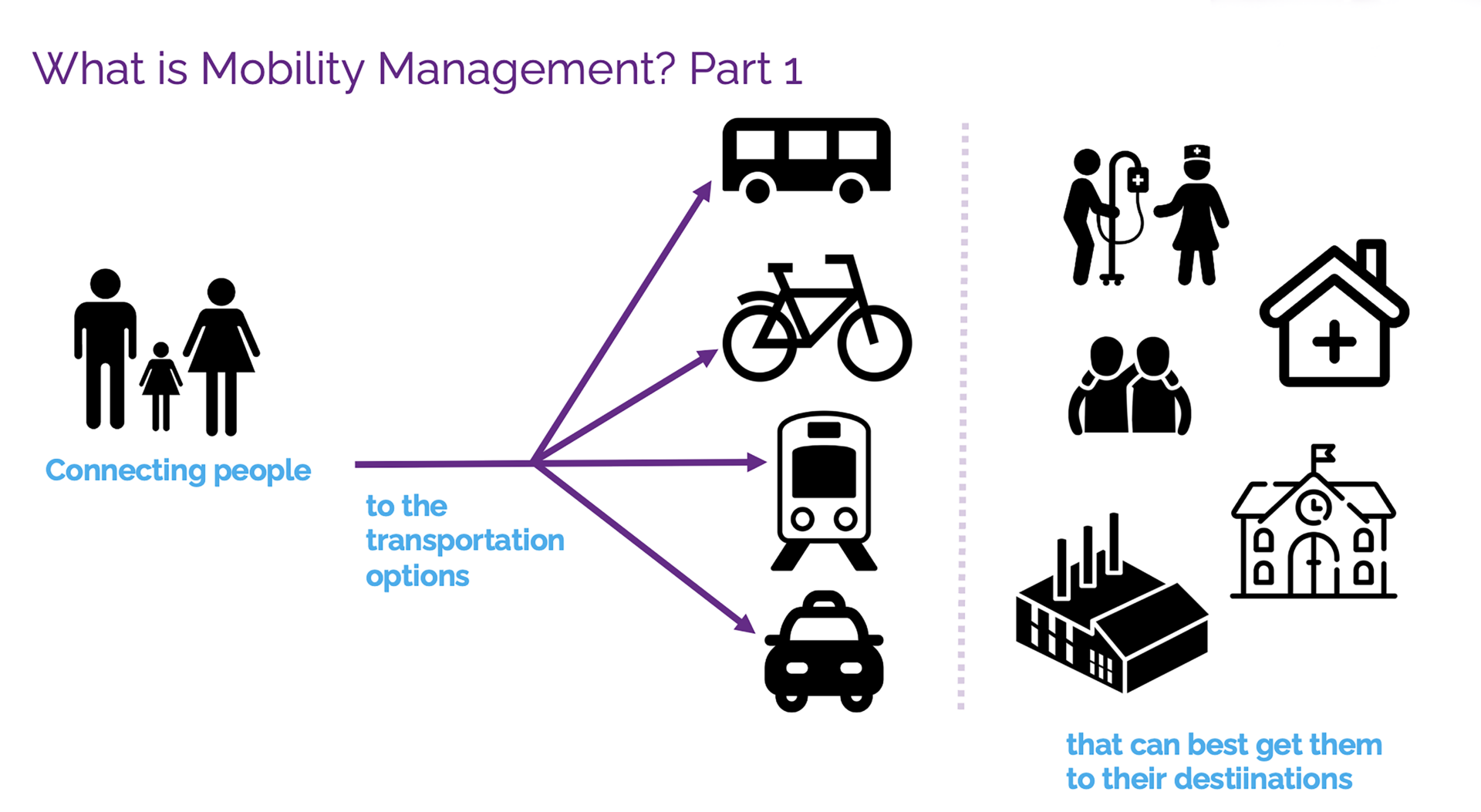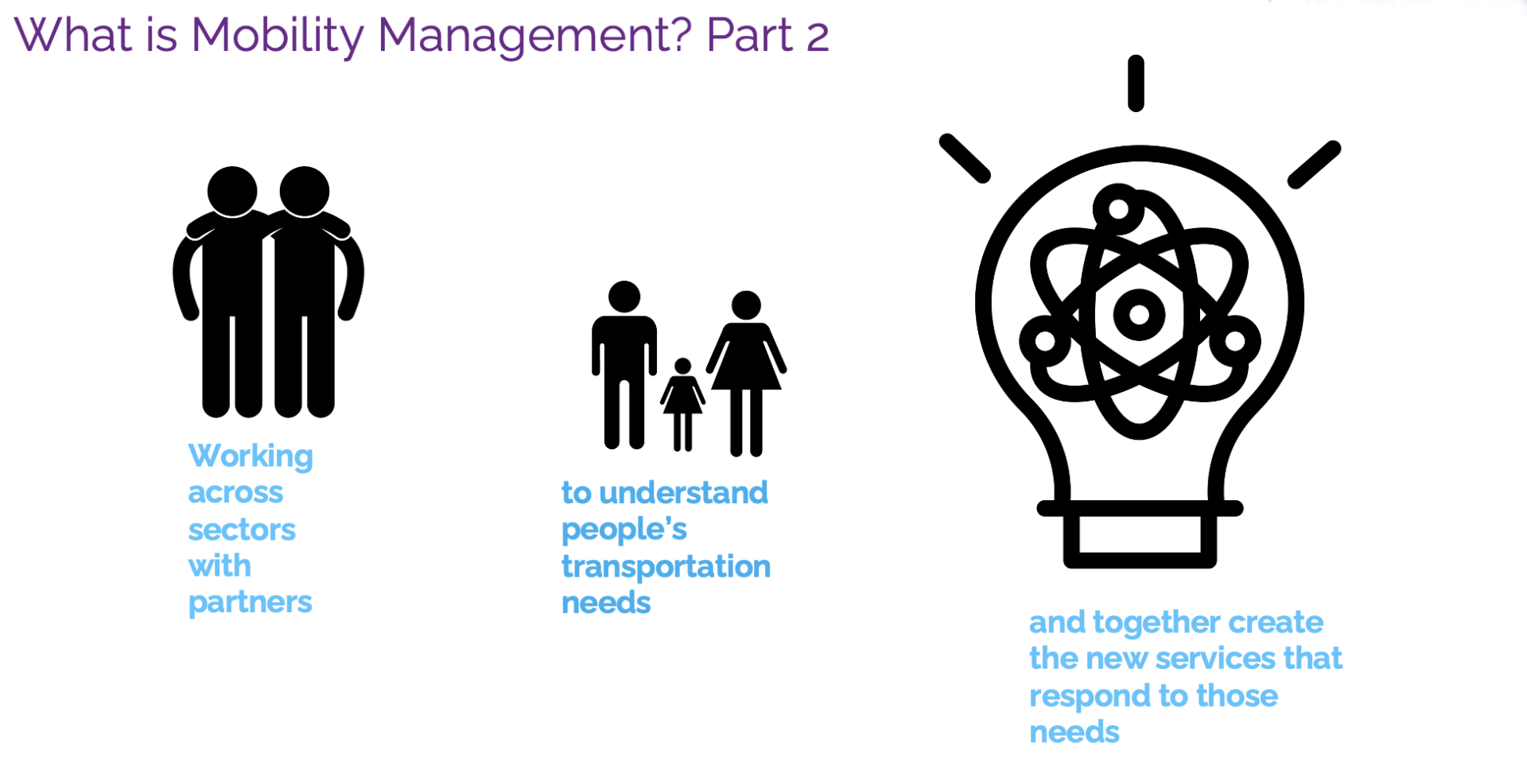Mobility management is a two-part endeavor:


Mobility management
- encourages innovation and flexibility to reach the “right fit” solution for customers
- plans for sustainability
- strives for easy information and referral to assist customers in learning about and using services
- continually incorporates customer feedback as services are evaluated and adjusted
Here are some key roles for mobility management professionals:
Inform and Connect. All mobility management activities point toward one goal: connecting customers to the transportation options that are most responsive to their needs. Mobility management practitioners excel at staying informed about existing community transportation services, sharing that knowledge with customers, and helping customers connect the dots in using all appropriate services.
Empathize and Advocate. With the empathy and understanding they have developed with their customers, mobility managers then share that knowlege with partners. Being able to articulate the relationship between transportation and the success of both individuals and community agencies that serve them is key to improving community transportation options.
Convene and Facilitate. Mobility management practitioners cultivate partnerships and create or join collaborative efforts that include transportation providers, planners, and other community stakeholders. Many also take the lead in facilitating teams, meetings, public engagement sessions, and other forums.
Design and Plan. A principle goal of mobility management is to design local and regional solutions customized to fit the community’s needs, resources, and vision. Practitioners of mobility management embrace both tried-and-true offerings and innovative solutions.
Launch and Sustain. When a mobility management practitioner—whether an individual or an agency—and partners have designed a new service or extension of a service, there are several steps they can take to ensure its launch is successful and sustainable:
- Test assumptions about what parts will work and why
- Design the new service to meet customer expectations and definition of usability, is operationally feasible, and can be shown to be financially viable
- Begin with a limited launch, testing a small-scale version of the service in real time, and solicit feedback from a small group of end users
- Modify the service based on feedback, and when satisfied, scale up to a full service

